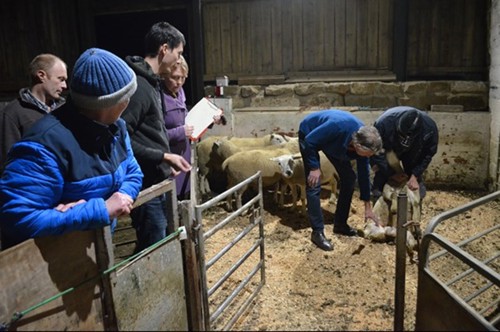Why is it important for engineers to co-design solutions with farmers rather than just for farmers?
Engineering a solution implies you understand the problem. If, as an engineer, you don’t work together with people who have first-hand knowledge of the problem you can’t design a suitable solution. A solution needs to be context specific, relevant and useful. Only by working with farmers can we gain a shared understand of the issue(s). To gain this shared understanding, innovation should be done iteratively to allow farmers to critique on something that wouldn’t work and for the engineer to respond to this critique, ultimately working together towards something that can work and is useful.

Another benefit of working together with people with first-hand knowledge such as farmers is that you can get new ideas that you as an engineer hadn’t considered. This then allows you to find a way to create another solution you hadn’t thought about.
Can you give me a good example of a case that illustrates the need for collaboration between engineers and farmers?
We have worked on a lone worker safety solution with one of the farmer groups. This is an example where there are already commercial solutions, but our co-design process has allowed us to identify the shortcomings of current solutions and create something that will overcome these.
What opportunities does working with farmers give you as engineers?
Working with farmers gives me the full context of the problem. “We need this and this” – the meetings helped to define the problem more clearly and to know what solutions would not be useful. It has led to a high calibre outcome by whittling down and refining the potential solutions we came up with initially.
What’s wrong with the way engineering currently does research and development into agriculture?
Currently engineering and research presume to already know the problem, or they work towards problems they think are important but that don’t actually add enough value to the farmer to be useful. In isolation engineers and research has created some unusable solutions.
What advice would you give to other engineers looking to build solutions with farmers?
Before developing a solution take the time to fully understand the problem and build up the trust for a properly co-developed innovation. Sharing is important but takes time and effort, which means that this needs to be time organised at the start of the innovation process.
If the engineer believes farmers are not qualified to describe the problems, they need to prioritise visiting the farm and walk with the farmer in their context where the farmer is the expert. If the engineer doesn’t have the skills to talk to farmers, or finds it difficult to manage the conversation, they should either look for training or they need to work with a third person who has those skills and can manage the conversation as well as the expectations of everyone involved in the innovation process.
It is important that the engineer actively acknowledges innovation as a two-way process, with unique knowledge held by all parties. The engineer can demonstrate this by genuinely listening to the farmers and build on what has been discussed in previous meetings.
What hope do you have for the direction of the engineering industry in terms of farmer-led innovation?
There is increasing recognition that farmers have a lot of experience and knowledge on why some existing innovations don’t work. Co-designing innovations with farmers can therefore be used to expedite the creation of future technologies that do work within context. Focused innovation will then help save effort and time.
What have been your experiences of working with farmers so far?
We have noticed how generous the farmers are in both groups - with open and honest conversations and a good dose of laughter. The farmers have clearly stated what they liked and disliked about different versions of the solutions. This is important although at times also difficult to hear.
Something that makes it harder to work together, but is the reality of working with farmers which we need to respect, is that the work load of farmers changes over the year. This means we have access to their expertise for some parts of the year, rather than across the year.
A motivation for both groups is to help the sector as a whole and there is a great willingness to help others. From the beginning of our conversations it became clear that the farmers are motivated by their personal values in addition to being able to make a living from farming.
Some solutions we are working on, such as the ‘leaf mimic’ solution for detecting pests or diseases in a crop, will really only come into play once a year, during the growing season of that particular crop. This is a long time to iterate over and highlights that agricultural innovations have a long development timeline.
Get involved in your own farmer-led research
To keep informed of how this field lab and others are progressing, sign up to our newsletter. Got your own idea for a field lab? Then contact the team to find out how to get involved.


